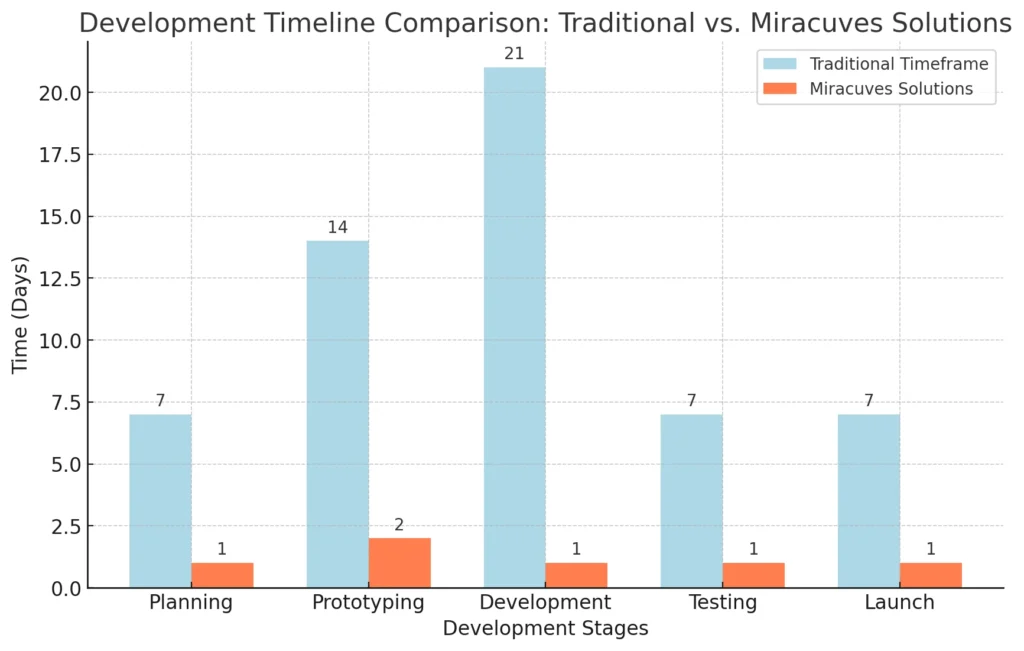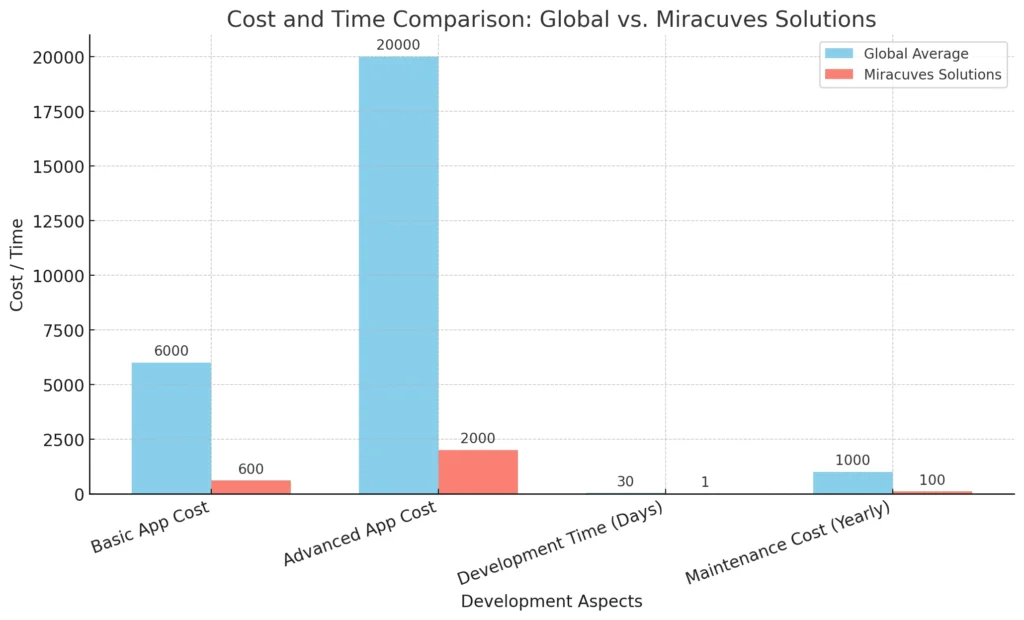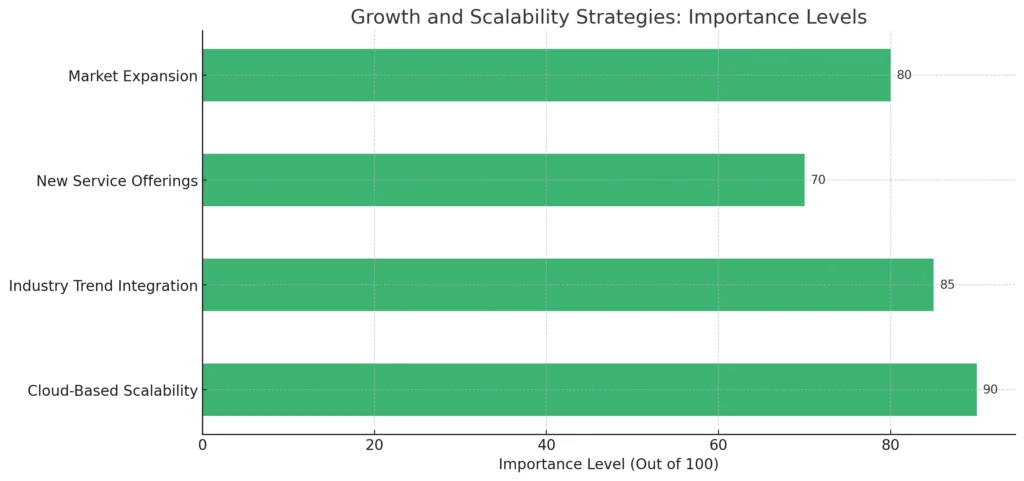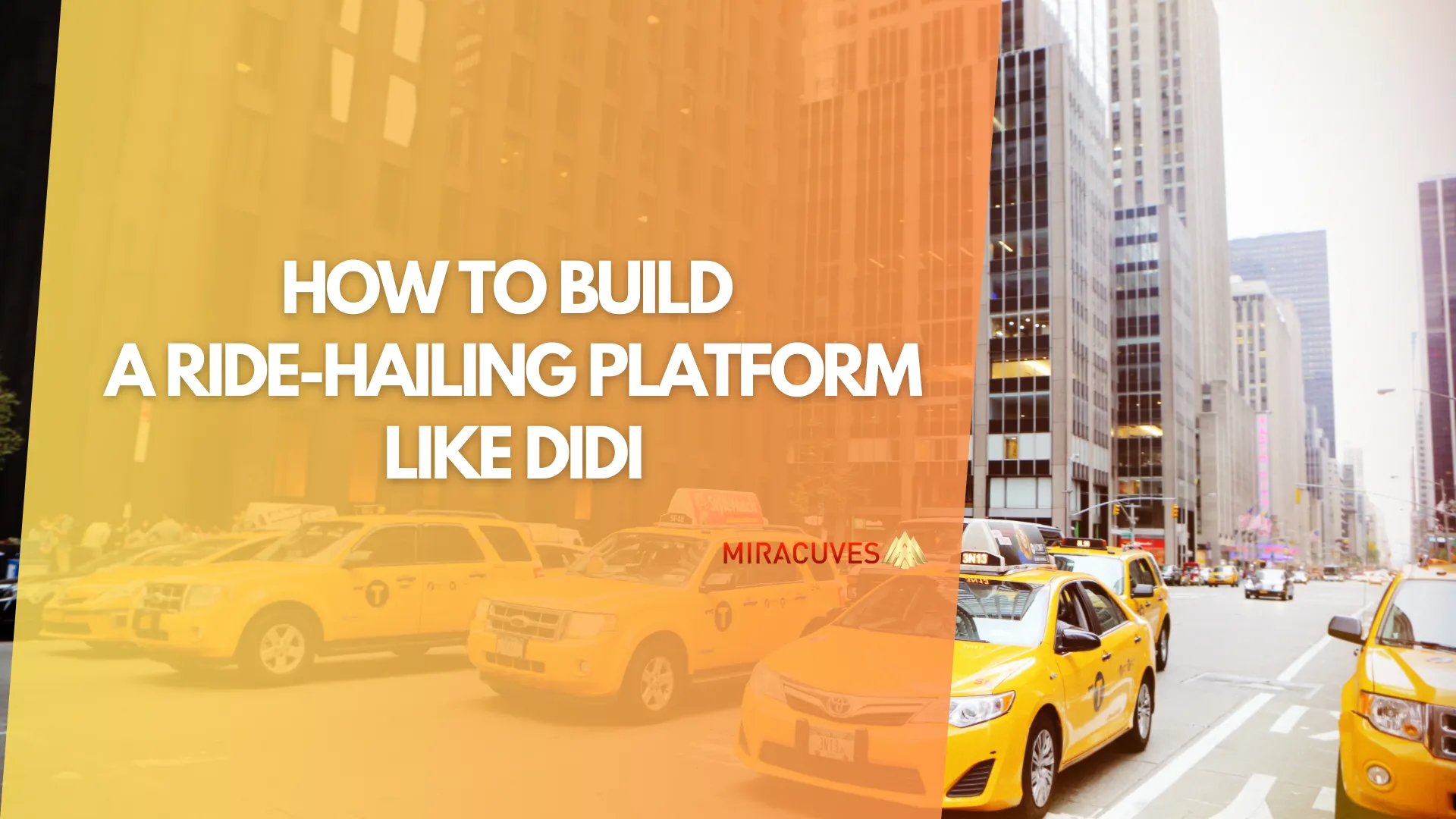In today’s fast-paced urban world, ride-hailing platforms like Didi have transformed how people commute. Offering a seamless blend of on-demand taxi services, carpooling, and urban transport solutions, Didi has become a global leader in mobility. With the rising demand for efficient and eco-friendly transportation, building a ride-hailing app presents a lucrative opportunity for entrepreneurs.
This guide will walk you through how to develop a ride-hailing platform like Didi, covering everything from key features to development costs. Whether you’re an aspiring startup or a tech innovator, this comprehensive framework will provide insights to turn your app idea into reality. Leveraging the power of ready-made solutions by Miracuves Solutions, you can build an app at 10% of the global cost and 30x faster than traditional methods.
What the App Is and What It Does
A ride-hailing platform like Didi connects passengers with drivers through a seamless, real-time mobile app. It offers various transport services, including on-demand taxis, carpooling, and private car booking, catering to urban commuters looking for affordable and efficient travel options. At its core, the app works through a simple process: riders request a ride, drivers in proximity accept the request, and the app calculates routes, estimated fares, and provides GPS tracking.
Didi has elevated urban mobility by integrating cashless payment systems and offering diverse vehicle options such as electric vehicles, bikes, and shared rides. The platform also enables ride scheduling and split payments, which add convenience for passengers. For drivers, it offers tools to manage trips, track earnings, and access support services directly through the app.
With in-app reviews and ratings, the platform ensures both riders and drivers have a safe and positive experience. Furthermore, Didi goes beyond transportation by expanding into food delivery and logistics in some regions, demonstrating the scalability of such platforms. This adaptability is a significant reason why ride-hailing platforms like Didi continue to grow, revolutionizing the way people move in cities.
Also Read:- How to Build a Ride-Hailing App Like Uber
Why Build This App?
The demand for ride-hailing platforms has surged globally as cities search for smarter, more sustainable transportation solutions. People today prefer convenient, affordable, and eco-friendly alternatives to traditional taxis. A platform like Didi offers exactly that by enabling cashless payments, real-time tracking, and multiple ride options, from solo trips to carpooling. For entrepreneurs, this opens a window to build a Didi clone or alternative, tapping into a growing market with high customer adoption.
Additionally, ride-hailing services address urban transport challenges by reducing traffic congestion through carpooling and optimizing vehicle usage. Governments in many regions are now encouraging mobility platforms as part of smart city initiatives. This creates opportunities to collaborate with local administrations and integrate public transport systems into apps, further increasing market reach.
Developing such a platform provides more than just financial gains—it also helps meet the shifting preferences toward sustainable transport, with the potential to offer electric vehicle rides. By building your app with a lean MVP approach and expanding gradually, you can test the waters quickly and then scale with additional services like food delivery or logistics, as Didi did.
Building this app becomes even more appealing when development costs are slashed by 90%, and the time-to-market is reduced from one month to one day using Miracuves Solutions’ pre-built app frameworks.

How to Differentiate from Competitors
In a highly competitive market, standing out from giants like Didi, Uber, and Lyft requires a strategic approach. The key to differentiation lies in offering unique features that address gaps in the current market or enhance user experience. One way is to provide eco-friendly options like electric vehicles or bike-sharing within your ride-hailing platform, appealing to environmentally conscious users. Integrating subscription plans for frequent travelers with exclusive discounts can also foster customer loyalty.
Localization plays a crucial role—customize your app to meet the cultural and legal needs of specific regions. For example, cash payment options are still preferred in certain markets, and language-specific interfaces create more user-friendly experiences. Another strategy is to introduce safety-focused features, such as real-time monitoring, SOS buttons, and background verification for drivers, which will help build trust with customers.
A smooth in-app experience can make a significant impact. Prioritize features like instant booking, ride-sharing suggestions, and route optimization using AI to shorten travel times. Gamification elements—such as badges, rewards, and achievements for drivers and riders—can also boost engagement.
Lastly, customer service is a game-changer. Provide 24/7 support channels and in-app chat features to resolve user issues promptly. By combining technological innovation with localized insights, your platform can differentiate itself and create a unique identity in the crowded ride-hailing industry.
| Feature | Didi | Uber | Your App Idea |
|---|---|---|---|
| Electric Vehicle Option | No | Yes | Yes |
| Subscription Plans | No | Yes | Yes |
| Safety Features | Yes | Yes | Enhanced SOS |
| Multilingual Support | Yes | No | Yes |
Market Size and Industry Growth
The ride-hailing industry has seen exponential growth in recent years, driven by urbanization, smartphone penetration, and the shift toward on-demand services. In 2023, the global ride-hailing market was valued at $130 billion and is expected to reach $230 billion by 2030, growing at a CAGR of 8%. This trend reflects a growing demand for convenient, cashless transport options, especially in densely populated cities.
The Asia-Pacific region leads the market, accounting for nearly 35% of global revenue, with countries like China and India dominating the space. Europe and North America are also strong players, though there is an emerging opportunity in Latin America and Africa, where urbanization is accelerating, and mobility solutions are gaining traction.
As people become more eco-conscious, electric vehicle (EV) ride options are fueling further growth. The shift toward shared mobility solutions, such as carpooling and subscription models, also contributes to the industry’s rapid expansion. In regions where public transport is insufficient, mobility-as-a-service (MaaS) is being adopted as a complementary solution to urban transportation.
This growth makes the ride-hailing industry highly lucrative for new entrants, especially those who can offer innovative and localized features to tap into underserved markets. Entrepreneurs can capitalize on affordable and fast-to-develop solutions, such as those provided by Miracuves Solutions, to gain early traction and scale quickly.
| Region | Market Share 2023 | Expected Growth by 2030 | CAGR (%) |
|---|---|---|---|
| Asia-Pacific | 35% | $90 Billion | 9% |
| North America | 30% | $70 Billion | 7% |
| Europe | 25% | $50 Billion | 6% |
| Latin America | 5% | $12 Billion | 8% |
| Africa & Middle East | 5% | $8 Billion | 10% |
Key Features of the App
A ride-hailing platform like Didi thrives on its ability to offer a seamless, feature-rich experience for both drivers and passengers. Let’s explore the key features that form the backbone of such a platform.
1. Passenger App Features:
- Real-Time Ride Tracking: Enables riders to follow their driver’s location from pickup to drop-off.
- Multiple Payment Options: Supports cash, cards, and mobile wallets to enhance convenience.
- Ride Scheduling: Riders can book trips in advance to manage time effectively.
- Carpooling Option: Users can share rides with others to save costs and reduce emissions.
- In-App Chat & SOS: Communicate with drivers and trigger emergency support in case of need.
2. Driver App Features:
- Trip Management Dashboard: Helps drivers track upcoming rides, earnings, and performance.
- Incentives and Rewards: Offers bonuses for completing a set number of rides or receiving good ratings.
- Navigation Integration: Provides optimized routes through GPS to minimize travel time.
3. Admin Panel Features:
- Analytics and Reporting: Offers insights into daily bookings, revenue, and driver performance.
- User and Driver Management: Allows admins to monitor accounts, resolve issues, and manage support.
- Surge Pricing Control: Adjust fares dynamically based on demand, time, or weather.
These features are essential to build a functional and competitive ride-hailing platform. A carefully designed app ensures customer satisfaction and encourages driver retention, laying the foundation for long-term success.
Also Read:- The Future of Ride-Hailing: Creating Your Own Lyft Alternative
| Feature | Passenger App | Driver App |
|---|---|---|
| Real-Time Tracking | Yes | Yes |
| Multiple Payment Options | Yes | No |
| Ride Scheduling | Yes | No |
| In-App Chat & SOS | Yes | Yes |
| Trip Management | No | Yes |
| Navigation Integration | No | Yes |
MVP and Development Approach
Building a Minimum Viable Product (MVP) is the smartest way to enter the ride-hailing market. An MVP focuses on launching the app with only the core features necessary to test its viability, attract early users, and gather feedback for improvements. Instead of developing a fully-featured platform from the start, launching an MVP ensures faster market entry and minimizes costs.
Essential MVP Features for a Ride-Hailing App:
- User Registration & Authentication: Riders and drivers must be able to create accounts quickly.
- Real-Time Ride Requests: Allow users to book rides instantly with fare estimation and driver assignment.
- GPS Tracking & Navigation: Integrated maps for route optimization and real-time tracking of drivers.
- Payment Gateway: Basic integration of mobile wallets or cards for seamless payments.
- Review and Rating System: Collect feedback to enhance service quality.
With an MVP, startups can test the market response and gradually add advanced features like carpooling, surge pricing, and subscription models based on user behavior. Leveraging ready-made frameworks from Miracuves Solutions can reduce the development time to a single day, providing a significant time-to-market advantage compared to the typical one-month timeline.
After launching the MVP, the development process becomes iterative, with new features added based on user feedback and market trends. This approach minimizes risks and ensures continuous improvement while scaling the app.
Every business has unique requirements, and while ready-made frameworks provide a head start, customization is key to standing out in a competitive market. By opting for custom app development, you can tailor your MVP to include features and functionalities that align with your target audience’s specific needs. This ensures your app not only meets industry standards but also delivers a unique user experience, setting the foundation for future scalability. Customization allows for the seamless integration of region-specific payment methods, language preferences, and unique ride options, making your app more relevant and appealing from day one.
| Features | MVP Version | Full Version |
|---|---|---|
| User Registration | Basic | Social Login |
| Ride Request & GPS Tracking | Yes | Advanced Route Optimization |
| Payment Gateway | Basic Integration | Multi-Payment Options |
| Review System | Basic Ratings | Gamified Feedback System |
| Carpooling Option | No | Yes |
Also Read – The Future of Ride-Hailing Apps: Why Uber Clone is Leading the Charge
Technical Requirements
Developing a ride-hailing platform like Didi demands a robust technical stack that ensures seamless performance, scalability, and security. Each component of the tech stack plays a critical role in the smooth operation of both the rider and driver apps. Here’s a breakdown of the key technical requirements for building a top-tier platform.
1. Frontend Development
- Technologies: React Native or Flutter
- Purpose: Develops cross-platform apps for iOS and Android to save time and resources.
- Focus: Fast, responsive UI/UX that provides a seamless experience for users.
2. Backend Development
- Technologies: Node.js, Django, or Ruby on Rails
- Purpose: Manages the core logic of the app, including ride matching, user authentication, and payments.
- Database: MySQL, PostgreSQL, or MongoDB for storing user data and ride history.
3. APIs and Integrations
- Google Maps API: For real-time navigation and GPS tracking.
- Payment Gateway APIs: Stripe, PayPal, or Razorpay for secure payments.
- SMS and Notification APIs: Twilio or Firebase for alerts and ride updates.
4. Cloud Infrastructure
- AWS, Azure, or Google Cloud: Handles scalable hosting and database management, ensuring the app runs smoothly even with high traffic.
Developing a robust ride-hailing platform requires integrating various technologies. One crucial element is Payment Gateway APIs like Stripe, which provide secure, seamless payment processing for riders. Additionally, using Google Maps API ensures real-time GPS tracking and optimized route navigation for drivers and passengers alike.
When building a ride-hailing platform, choosing the right technology stack is only half the battle. Ensuring the app is scalable and flexible to accommodate growing user demands is equally critical. By leveraging ride-sharing app solutions from experienced providers like Miracuves, you can streamline the integration of key features such as real-time GPS tracking, dynamic pricing, and seamless payment processing. These ready-made solutions not only speed up development but also reduce the complexity of managing backend operations, ensuring your platform is equipped to handle peak traffic without performance hiccups.
| Component | Recommended Tools | Purpose |
|---|---|---|
| Frontend | React Native, Flutter | Cross-platform development |
| Backend | Node.js, Django | Core app logic management |
| Database | MySQL, MongoDB | Store user and ride data |
| Maps Integration | Google Maps API | GPS tracking and navigation |
| Payment Gateway | Stripe, Razorpay | Secure in-app payments |
Design and User Interface (UI/UX)
The design and user interface (UI/UX) of a ride-hailing app play a critical role in user engagement and satisfaction. A smooth and intuitive design ensures that both drivers and passengers can navigate the platform effortlessly, leading to better retention and increased usage. In ride-hailing platforms like Didi, the focus is on simplicity and functionality—the app must work seamlessly across diverse devices and user groups.
Core Design Elements:
- Easy Onboarding: A clean registration flow with clear instructions, allowing users to sign up or log in within seconds.
- Minimalist Interface: Use of simple icons and minimal colors to avoid clutter and provide a professional look.
- Real-Time Information Display: Essential data, like driver ETA, ride cost, and route, shown on the home screen.
- One-Tap Actions: Users should book rides, cancel trips, and contact drivers with a single tap.
- Dark and Light Mode: Providing a theme switch gives users control over their experience based on personal preference.
Driver App Considerations:
- Trip History & Earnings Dashboard: Clear visualization of completed trips and daily earnings.
- Push Notifications: Alerts for ride requests and updates to minimize missed trips.
By using ready-made solutions from Miracuves Solutions, you can drastically reduce development time while maintaining high design standards. These ready-made solutions are optimized for cross-platform performance, ensuring your app looks and works great on both iOS and Android devices.
| Step | User Action | System Response |
|---|---|---|
| Open the App | Tap the app icon | Home screen loads with map |
| Select Destination | Enter address | Fare estimate shown |
| Confirm Booking | Tap “Confirm” | Driver assigned, ETA displayed |
| Track Ride | Follow on GPS | Real-time tracking on map |
| Payment | Select payment method | Payment processed automatically |
Development Process
Building a ride-hailing platform like Didi requires a structured development process to ensure smooth functionality and scalability. The process involves multiple stages, from planning to testing, each contributing to a high-performing app ready to meet market demands.
1. Research and Planning
- Market Research: Understand your target audience and analyze competitors like Didi, Uber, and Lyft.
- Feature Prioritization: Identify the essential features for your MVP to launch quickly and collect feedback.
2. Wireframing and Prototyping
- Create basic wireframes to define the user journey and interface design.
- Use tools like Figma or Adobe XD to build interactive prototypes for testing.
3. Frontend and Backend Development
- Frontend: Develop using cross-platform frameworks like React Native or Flutter.
- Backend: Build the server-side logic with Node.js or Django, managing ride requests, payments, and user authentication.
- Database Setup: Use MySQL or MongoDB to store ride histories, user details, and payment logs.
4. Testing and Debugging
- Conduct unit testing and integration testing to ensure the app works across devices.
- Perform load testing to confirm the platform’s stability under high user traffic.
5. Deployment and Launch
- Deploy the app on App Store and Google Play. Monitor performance through analytics tools and resolve issues quickly.
- Launch with a beta version to collect user feedback for further improvement.

Planning to launch a ride-hailing platform like Didi?
Get a free cost breakdown for driver matching, real-time
tracking, and secure payments.
Cost Estimation and Timeframe
One of the most crucial aspects of building a ride-hailing platform like Didi is understanding the cost and timeframe. Globally, the cost of developing a ride-hailing app typically ranges from $5,000 to $10,000 for basic functionality, with timelines stretching from 4 to 6 weeks. However, if you aim to include advanced features like carpooling, subscription models, and real-time analytics, the cost can escalate up to $20,000 or more, and the timeline can expand to 3-4 months.
Miracuves Solutions: A Game-Changer in Cost and Time
Miracuves Solutions offers a ready-made framework that drastically reduces both the cost and development time. For example:
- Cost: Instead of spending $6,000 on a standard app, Miracuves Solutions provides the same at 10% of the global price—just $600.
- Timeframe: A process that typically takes 1 month can be completed within 1 day using Miracuves Solutions’ ready-made components and templates.
Why This Matters
By reducing costs and timelines, startups and businesses can enter the market quickly and invest the saved resources into marketing and scaling efforts. This not only provides a competitive edge but also allows companies to experiment with additional features without exceeding budgets.

Monetization Strategies
A well-designed ride-hailing app, like Didi, offers multiple ways to generate revenue. Implementing the right monetization strategies ensures the platform becomes not only popular but also profitable. Let’s explore the most effective ways to monetize a ride-hailing platform.
1. Commission per Ride
The primary income model involves charging drivers a commission for each ride. Typically, platforms take 10-20% of the fare as commission, incentivizing both drivers and the platform to maintain high service quality.
2. Surge Pricing
During high-demand periods, such as rush hours or bad weather, surge pricing allows the app to increase fares dynamically. This benefits both drivers and the platform while balancing supply and demand.
3. Subscription Models
Riders can opt for membership plans with exclusive benefits, such as discounted rides or priority bookings. Similarly, drivers can pay for a premium membership that reduces commission rates and offers better visibility to customers.
4. In-App Ads and Partnerships
Collaborate with local businesses to display in-app advertisements or offer exclusive discounts for users. Strategic partnerships with fuel stations or restaurants can also provide additional revenue streams.
5. Carpooling and Shared Rides
Introducing carpooling allows passengers to share rides, making transportation more affordable. The platform benefits by charging a small fee per additional passenger.
By applying a combination of these strategies, the app ensures a stable and scalable revenue model. Using Miracuves Solutions, you can integrate these monetization options easily into your platform from day one.
| Monetization Model | Description | Example |
|---|---|---|
| Commission per Ride | Charge a % fee on every ride completed | Didi takes ~20% per ride |
| Surge Pricing | Increase fares during peak demand | Higher fares during rush hour |
| Subscription Plans | Riders/drivers pay for exclusive benefits | Uber Pass, Didi VIP |
| In-App Advertising | Partner businesses advertise in-app | Fuel station offers in the app |
| Carpooling Fees | Charge for each additional passenger | Shared rides with lower fares |
Launching and Marketing the App
Launching a ride-hailing platform like Didi requires more than just building the app—it needs a strategic marketing plan to gain users and build brand awareness from day one. A well-executed launch combined with targeted marketing ensures your platform captures early adopters and grows sustainably.
1. Pre-Launch Strategy
- Beta Testing: Release the app to a select group of users to gather feedback and fix bugs before the official launch.
- Landing Page and Social Media Teasers: Create a landing page with early signup offers and tease features on social media platforms to generate buzz.
- Influencer Collaborations: Partner with local influencers to promote the app during the launch phase.
2. Launch Strategy
- Soft Launch: Deploy the app in a smaller region to test operations and user feedback.
- Referral Programs: Encourage users to invite friends by offering ride discounts or wallet credits. This can help grow your user base quickly.
3. Post-Launch Marketing
- SEO and Paid Ads: Optimize the app’s website for search engines and invest in Google and social media ads to attract users.
- Social Media Engagement: Run interactive campaigns with giveaways or contests to build a loyal community.
- Loyalty Programs: Introduce reward points or ride credits for frequent users to retain customers.
A structured launch combined with strategic marketing ensures the app gains early traction. With Miracuves Solutions’ fast development, you can focus on marketing and have the app live in record time.
Also Read:- Build Taxi App Like Gett
| Phase | Activities | Purpose |
|---|---|---|
| Pre-Launch | Beta testing, Landing page | Gather feedback, build hype |
| Launch | Soft launch, Referral programs | Test operations, grow users |
| Post-Launch | SEO, Paid ads, Social campaigns | Maintain momentum, retain users |
Legal and Regulatory Considerations
Operating a ride-hailing platform like Didi requires compliance with various legal and regulatory frameworks to ensure smooth operations and avoid penalties. These laws can vary by region, so it’s essential to understand and integrate the relevant policies early in the development process.
1. Data Privacy and User Consent
With ride-hailing apps collecting sensitive information like location data, payment details, and personal profiles, compliance with privacy laws is crucial. Regulations such as the General Data Protection Regulation (GDPR) in Europe and California Consumer Privacy Act (CCPA) require transparent policies on data collection and usage. The app must obtain user consent and allow users to delete their data if requested.
2. Driver Regulations and Background Checks
Most regions mandate background checks and licensing for drivers to ensure passenger safety. Your platform must include driver verification processes to comply with these regulations and offer safe transportation services.
3. Insurance and Liability
Ride-hailing platforms must offer insurance coverage for drivers and riders during trips. Many countries require platforms to have commercial vehicle insurance to protect all parties in case of accidents or disputes.
4. Taxation and Employment Laws
Depending on the region, drivers may be classified as employees or independent contractors, which impacts taxes and benefits. Platforms must ensure compliance with labor laws to avoid legal challenges and fines.
| Legal Requirement | Description | Example Compliance Standard |
|---|---|---|
| Data Privacy & Consent | Transparent data policies | GDPR, CCPA |
| Driver Background Verification | Check licenses, criminal records | Mandatory in most regions |
| Insurance & Liability | Provide commercial insurance | Protects riders and drivers |
| Tax & Employment Compliance | Classify drivers properly | Varies by region (contractors vs. employees) |
Future Growth and Scalability
To succeed in the competitive world of ride-hailing, your app must be built with scalability and future growth in mind. As the platform gains traction, demand for new features, more users, and additional services will increase. Planning for future growth ensures your app evolves to meet changing market needs.
1. Expanding into New Markets
Starting in a single city or region is a smart way to test the app. Once operations are stable, the platform can expand to new cities or countries. Localization will be key—offering language support and adapting payment methods based on the region ensures smooth scaling.
2. Introducing Additional Services
Many ride-hailing platforms, like Didi, evolve beyond transportation by adding food delivery, logistics, or even grocery delivery services. These adjacent offerings diversify revenue streams and increase app engagement.
3. Adapting to Industry Trends
Stay ahead by integrating electric vehicles (EVs) and sustainable transport options. Collaborate with governments or private entities working on Mobility-as-a-Service (MaaS) solutions to keep the platform relevant and eco-friendly.
4. Ensuring System Scalability
A scalable backend is crucial as the platform grows. Using cloud infrastructure like AWS or Google Cloud ensures that the system can handle spikes in demand without downtime. API integration will also be essential for expanding partnerships and adding new functionalities seamlessly.
As your platform grows, it’s essential to have cloud infrastructure that scales with demand. Services like AWS or Google Cloud offer scalable solutions to handle peak traffic without downtime. This ensures your app remains stable and responsive even as your user base expands across new cities and regions.

Why Trust Miracuves Solutions for Your Next Project?
Choosing the right partner to build your ride-hailing platform can be the difference between success and failure. Miracuves Solutions offers a combination of cost-efficiency, speed, and expertise, making it the ideal choice for entrepreneurs and businesses aiming to create a competitive app like Didi.
1. Unmatched Affordability
Developing an app from scratch can cost between $6,000 and $20,000, but with Miracuves Solutions, you can get the same quality at 10% of the global average. This makes building a full-featured ride-hailing app accessible even to startups with limited budgets.
2. Rapid Development and Market Entry
While traditional development takes 1-3 months, Miracuves Solutions reduces this timeline to just 1 day by providing ready-made frameworks and pre-built templates. Faster development means you can launch sooner and start generating revenue without delays.
3. Customization and Scalability
Miracuves Solutions offers highly customizable solutions, allowing you to tailor your app to meet unique business needs. As your platform grows, their systems ensure scalability, supporting the seamless integration of new features and services.
4. Compliance and Reliability
Their solutions are built with security and compliance in mind, ensuring your app adheres to data privacy laws and industry standards. With a proven track record, Miracuves Solutions offers peace of mind, knowing your project is in expert hands.
Also Read :- Building a Ride-Hailing App: Create Your Own Lyft Alternative
Conclusion
Building a ride-hailing platform like Didi offers a tremendous opportunity to tap into the growing demand for urban mobility solutions. With the right combination of core features, monetization strategies, and market insights, your app can stand out in a competitive space. However, the key to success lies in efficient development, scalability, and affordability. This is where Miracuves Solutions becomes a game-changer, offering cost-effective, ready-made frameworks that drastically reduce both development time and expenses.
By leveraging their expertise, you can launch your app within a day instead of waiting months, leaving you more time to focus on marketing and scaling the platform. Whether you aim to offer ride-sharing, delivery, or logistics services, Miracuves Solutions ensures your app is future-proof and compliant from day one. With the right tools and a strong strategy, your ride-hailing app can become the next industry leader.
Ready to create a seamless ride-hailing app?
Start Building Your Ride-Hailing App ! We’ll help you design a platform with real-time GPS, efficient ride matching, and secure payments.
FAQs
What is the estimated cost to develop a ride-hailing app like Didi?
The global average cost is $6,000 to $20,000, depending on features. However, using Miracuves Solutions, you can build the same app for just $600 to $2,000, saving up to 90%.
How long does it take to build a Didi-like app?
Traditional development can take 1-3 months, but with Miracuves Solutions, the entire platform can be ready in 1 day, thanks to their pre-built frameworks.
What features should an MVP version of the app have?
An MVP should include ride booking, GPS tracking, payment gateway, and user authentication. These core features are essential to test the market and attract early users.
What makes Miracuves Solutions better than other providers?
Miracuves Solutions offers cost-effective, customizable, and scalable solutions at 10% of the global cost, with 1-day development and built-in compliance for peace of mind.
Can the app scale as demand grows?
Yes, Miracuves Solutions ensures scalable infrastructure, allowing you to add features and expand to new markets seamlessly without disrupting operations.
Check out our popular ride-sharing app solutions offered by Miracuves – built for flexibility, performance, and global reach:
- InDriver Clone Solution – A dynamic ride-hailing app where riders and drivers negotiate fares in real time, offering more control and transparency.
- Uber Clone Solution – A complete ride-sharing platform with GPS tracking, fare estimation, driver management, and seamless payments.
- Lyft Clone Solution – A user-friendly transportation app with scheduled rides, driver ratings, and real-time route tracking.
- Careem Clone Solution – Book safe, reliable rides from economy to executive. Track your driver in real-time, get fare estimates, and enjoy cashless rides.








